Are you going to Scarborough fair?
This week: Parsley, Sage, Rosemary and Thyme; Badly behaved plants; Not enough wind; Fruits for the picking;
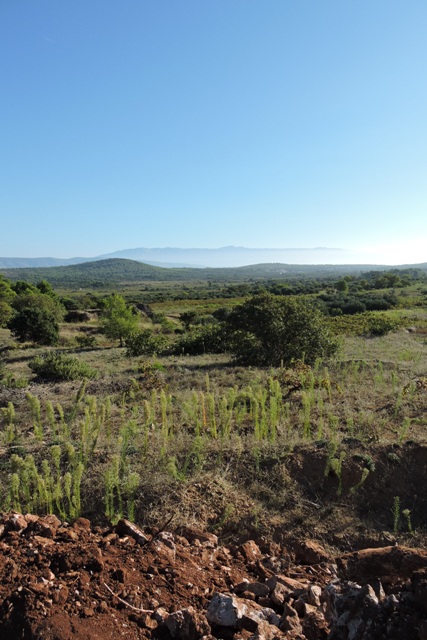
It is a horrible thought, but in just twelve weeks it will be New Year and we will be in 2024.
Meanwhile, as the temperature records across the Northern Hemisphere are broken, with September 2023 being the warmest ever recorded. The EU Copernicus programme reports that Europe has exceeded the record by 2.51ºC.
Here we are enjoying a warm October, much like last year was. The skies are blue, with just a little occasional high cloud. But other than that it is lovely with almost no wind.
The nights are cooler, but pleasantly so. It is barely two weeks ago that the temperature outside was 23.5ºC, when I was out and about at five in the morning!
The grape harvest has just about finished and the olive harvest is set to start.
The weather we have had means that the quantity of olives to be picked is down, so the volume of oil produced will be lower, but the quality will be very high.
This morning I was in Vrboska, having been invited to some friends whose new kitchen has been completed.
What could be nicer than Brunch on the terrace, in warm sunshine, overlooking the harbour?
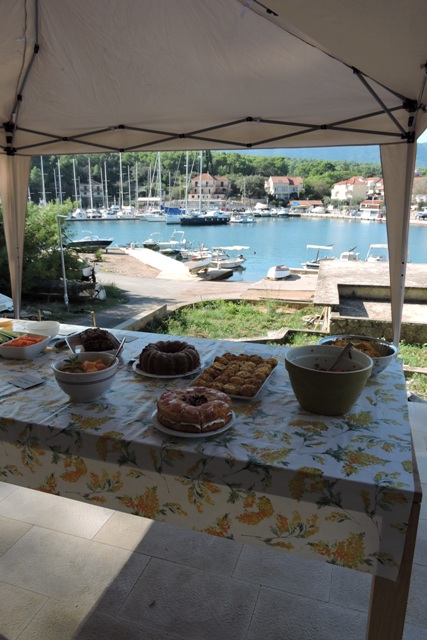
Parsley, Sage, Rosemary and Thyme
I have finished the raised herb bed in the polytunnel this week.
In doing so, I’ve realised that the doors are perhaps a little on the small side. However they were designed around the size of the polycarbonate sheets I used for the end walls.
This means that I had to move the wooden boards inside and then assemble in situe. I have bedded the raised wooden boards on stones for two reasons.
Firstly so that the boards are easily levelled and secondly so that there is ample drainage around the bottom of the boards, even though they are encased in a thick plastic membrane.
With the frame in place and level, I began to dig out an all-weather path next to the raised bed and to use the soil to fill the frame.
Because the soil in the polytunnel is so dry, using a hand riddle to remove the stones, was a dirty job with fine dust going everywhere.
I had thought about bringing my rotary riddle into the polytunnel, to speed ip the separation of stones and soil.
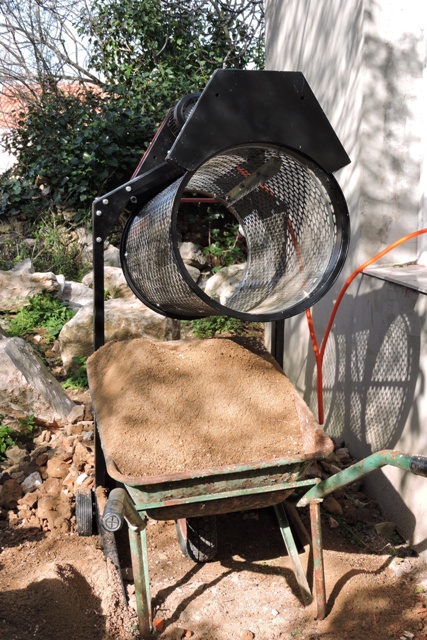
As soon as a measured the door aperture, I realised that even if I disassembled the machine, I could not get it through the door so the work was going to have to be done by hand.
Once the frame was filled, I watered the soil well then applied a layer of peat.
Yes, I know bags of peat are not environmentally friendly, but tell that to my Croatian neighbours! And they are easy to buy here.
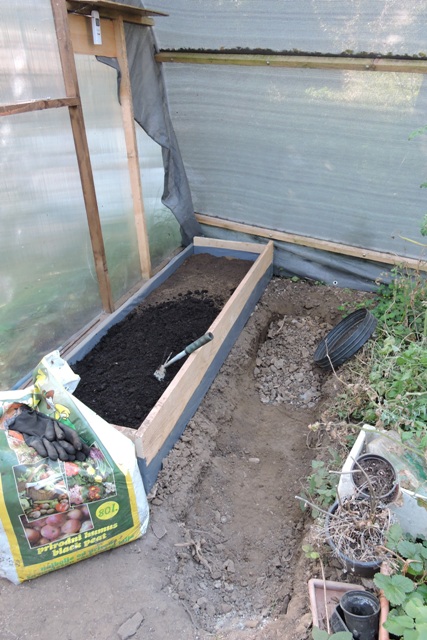
The soil is poor and without any organic matter. While I was digging and riddling, I did not find one single, solitary earth worm.
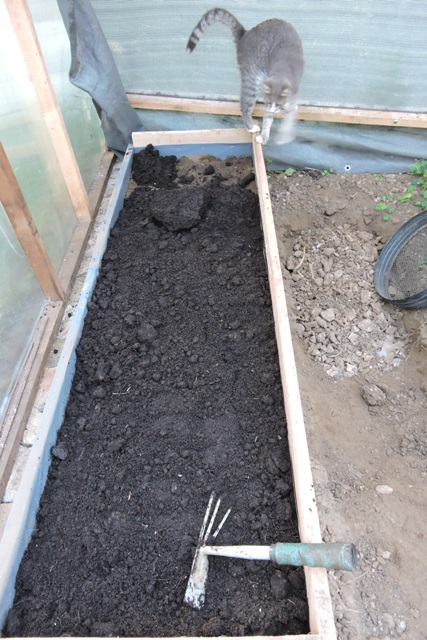
That alone tells you something about the problems I have with my soils in Dol.
With the peat in place, and I found earth worms in the peat, I watered it again before planting some of my well behaved perennial herbs.
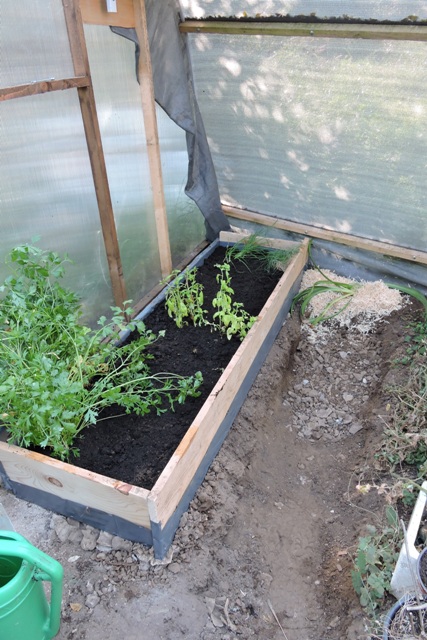
Badly behaved plants
Basil, Chives and Parsley have all gone into the new bed.
The badly behaved herbs, which spread everywhere and engulf the plants around them are things like Mint and Sage. They will go into large separate pots where they cannot spread.
I have of course got Parsley, Rosemary and Thyme. I would also like to plant Oregano, French Tarragon, Red veined sorrel and Winter Savory in the raised bed as well.
It does of course remind me of the Simon and Garfunkel song.
I have had this song as an “ear worm” all this week, but it is one of my favourites, especially as once having been stationed in Scarborough. Scarborough is a retirement town on the coast of England.
The “Scarborough Fair” was a popular gathering in Medieval times, attracting traders and entertainers from all over the country. The fair lasted 45 days and started every August 15th.
It was a large and important coastal town with an imposing castle on a headland jutting out into the North Sea, that could be seen from great distances.
In the 1600s, mineral waters were found in Scarborough and it became a resort town. Today, Scarborough is a quiet town, but with a rich history.

Not enough wind
As I mentioned at the start, the weather at the moment is perfect.
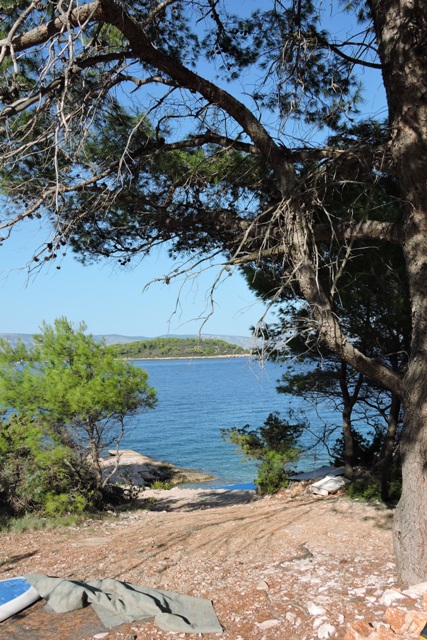
The days are sunny and warm, with temperature around 26º or 28ºC so I have been down to the beach to try my foilboarding skills.
Sadly there has been little to no wind, so with a paddle, I have used my board as a paddle-board.
The Adriatic sea around Otok Hvar at the moment is 24ºC, a very pleasant temperature to swim in, float on and enjoy.
The beaches on the island are almost all pebbles, with just a couple that are sandy.
Around the island, the Adriatic is gin clear, with visibility to the bottom, five or more metres deep. There can only be so many more days of good weather left this year, so I am making the most of them!
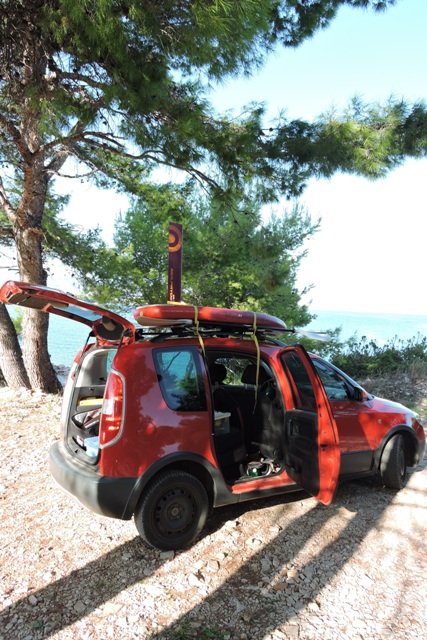
Fruits for the picking
The two main crops on the island are grapes for wine and olives for oil. There are smaller crops of essential oils from lavender, immortelle (Helichrysum italicum) and rosemary too.
You can see Citrus trees in many places, but these are generally grown for personal use or for sale in the local green market, rather than commercially.
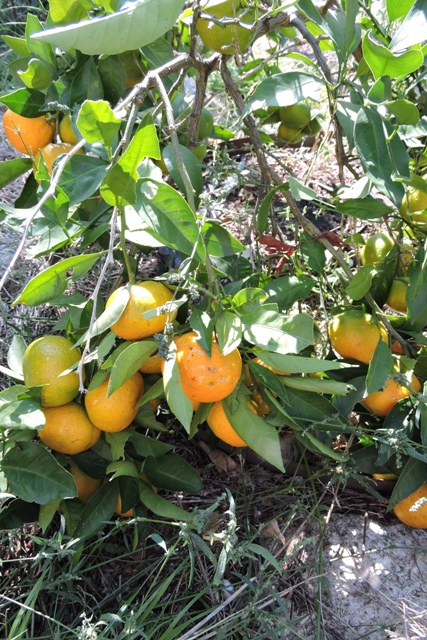
With all the rain this year, I have an excellent citrus crop and I picked the first Mandarin this week. It was sweet and juicy.
I also picked the first of my Persimmon. If you have never tried a Persimmon, you have missed out.
My Persimmon tree is from the Hachiya variety, which originates in Asia. It is classed as “astringent”, however I like to eat them raw.
They do need to be bletted so that the flesh is soft, sweet and juicy, but they are lovely with yogurt or with ice cream.
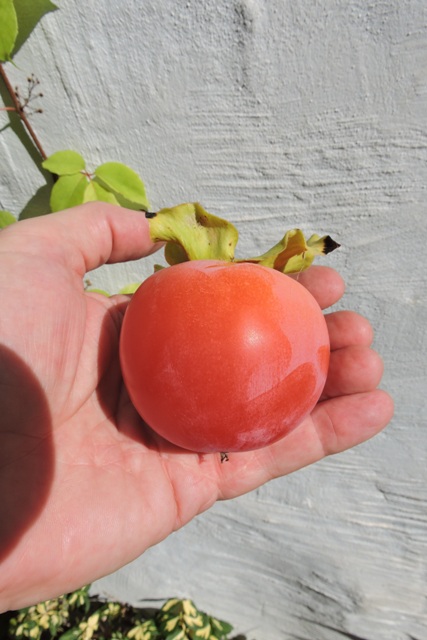
They are also regularly baked into Spice Bread. The other variety is Fuyu, which store and travel better than Hachiya, and do not need bletting.
The grapes in my garden are not for wine. I made a decision when I moved to Dol that I could never learn the skills of a vintner, so I would concentrate on other fruits, and eat my grapes as a dessert variety.
This week I came across a recipe in the Guardian for Focaccia. This is an Italian flat bread made using just water, yeast, flour and sugar, and stuffed with black grapes and rosemary.
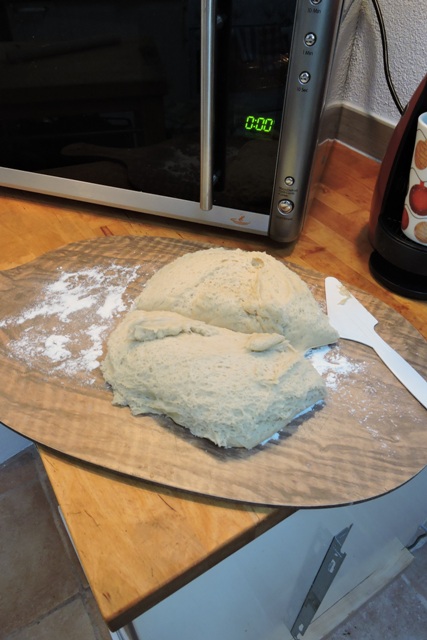
With lots of the main ingredients, I decided to try making some. The Focaccia dates back to Roman times or earlier, and is a staple of Italian cuisine.
After separating the risen dough into two equal halves, I stretched it to fit my cooking tray.
I might never be as good at this as this Pappa John’s chef though, but this is the principle!
Once in the baking tray, I added grapes, ground pepper and rosemary, then added the second layer of dough and more grapes and rosemary. This was followed by being brushed with olive oil.
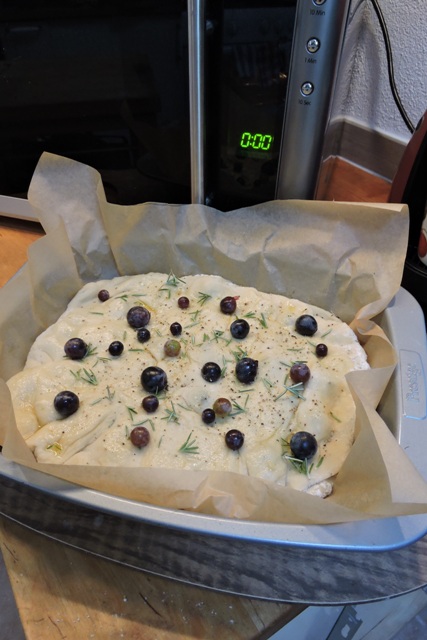
It is a type of pizza, and I think you could adjust the ingredients to include your pizza favourites.
It is cooked in the centre of the oven, on a low temperature of 160ºC for forty minutes.
The photo makes the Focaccia look a little anaemic but it is actually nicely brown and extremely tasty.
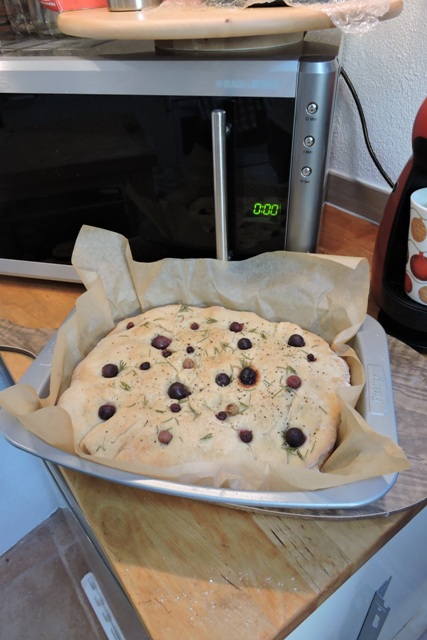
Another fruit I have in my garden that are ready for picking are the Red Dates, Ziziphus jujube.
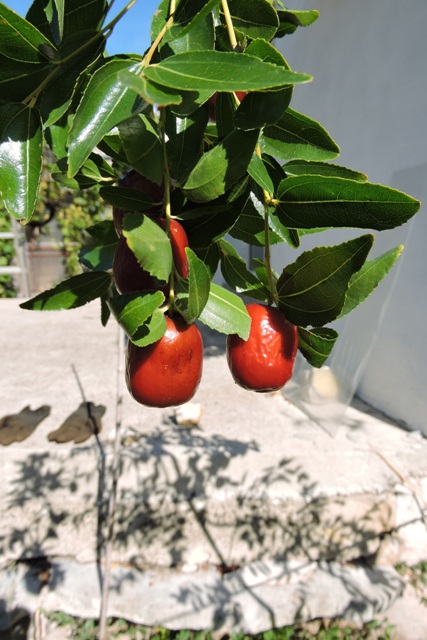
The tree is only small and I planted it out last winter, after three years being grown in a pot. It will eventually develop into a three to five metre tree. NCG